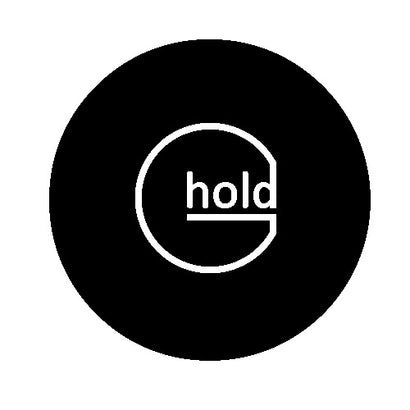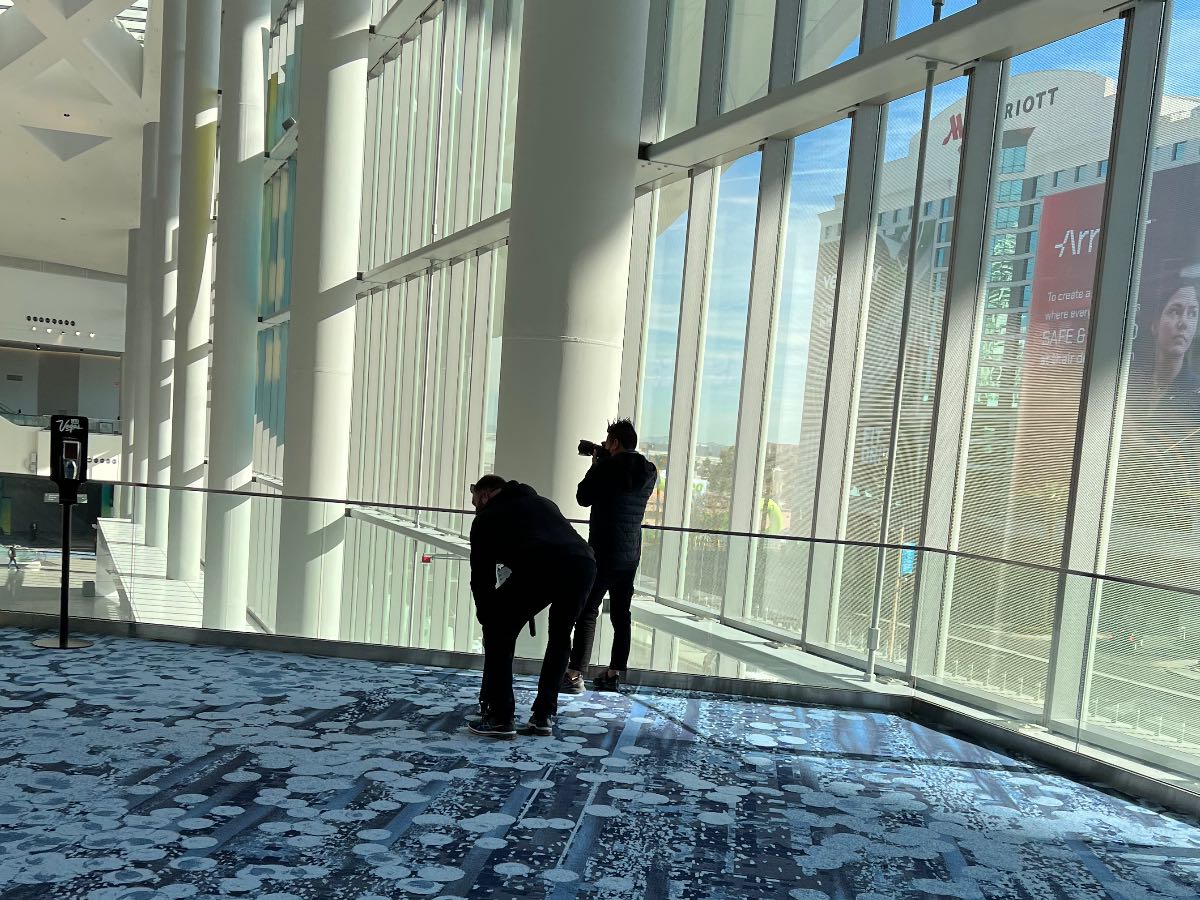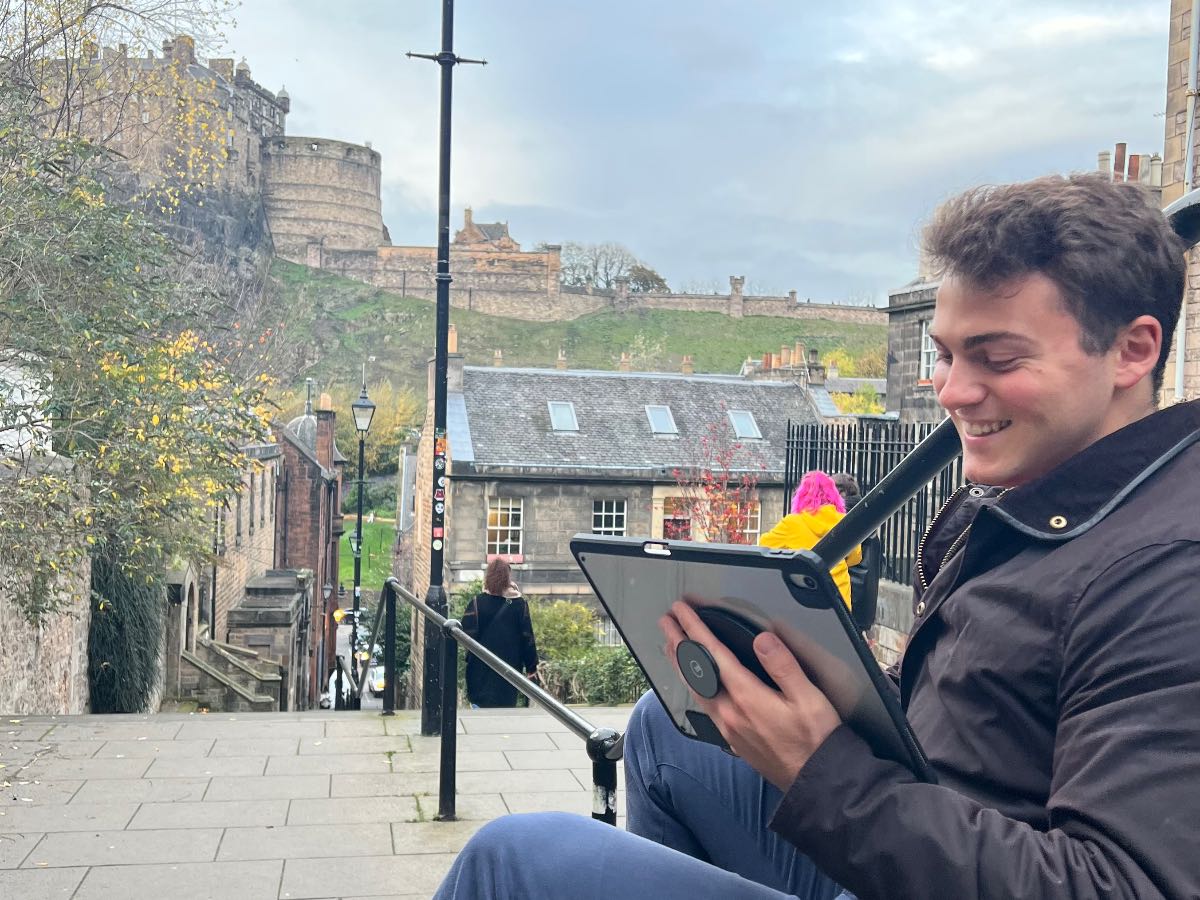The Evolution of the Human Body in the Digital Age - Digital DNA Glasgow

Today’s talk is going to be about the evolution of the human body in the digital age. My name is Alison Grieve and I’m the Founder of G-Hold. I’ve spent over a decade researching ‘The Science of Holding’.
Initially, I came up with the idea for a foodservice tray that didn’t topple over (Safetray). The primary purpose of that invention was to prevent accidents from happening, but through that process I learned a lot about the musculoskeletal health of human beings, and of how they hold things. I went on to develop G-Hold Tablet Holders for iPads and other mobile devices.
But more recently, I’ve been thinking more philosophically about the human body in an era in which we are sat in a stationary position. Because, actually, despite the fact that technology has evolved and developed incredibly, particularly over the past two decades, the human body has remained the same for millennia.
We have the same carpal tunnel running through our wrist, we have the same spines, we have the same eyesight. But the human body is really designed to hunt, to scavenge, to make, create and to move.
Movement is incredibly important for the human body.
When I think back to when I had my first job in an office, I was really struck by scores of people sitting under unnatural lighting in a stationary position, not moving and not communicating directly, just staring into these box screens, which seemed to me to be completely unnatural and not something I’d ever thought of before.
Even to this day, human beings are primarily sitting, when they’re working in an office, in a stationary position, and not moving.
I thought back to how desks, once upon a time, were designed when we transitioned from being hunters and gatherers into an age where we needed to take our knowledge and our work from books. Looking back to the Middle Ages, even then, our desks were designed to be more healthy for the body than they are today. Scribes would sit in front of sloped desks which allowed their posture to be upright and allowed them to take reference from other books in a standing position.

Image Sources: Image 1, Image 2
This image on the left is actually of a scribe using his book to take notes on the book above him. So, basically, it was like an early sit-stand desk.
If we look at the image on the right, that was perhaps our first version of scrolling through different screens, because it was a wheel machine for reading books where the man or woman would actually physically move the wheel in order to reference different books.
Over lockdown I thought a lot more about the human body and, as we took control of our own environments when we were locked down and really not moving into different environments, not commuting or changing our environments.
I thought to really take control of my own working environment and developed a Working From Home Kit that allowed me to move my screens to an appropriate height. I thought a lot about how much that really empowered my own situation.
Can I ask how many here of you today worked primarily on a laptops through the past two years?
[Majority of audience raised their hands.]
And did you feel any negative impact on your back over the past two years?
[Majority of audience raised their hands again.]
Yes, it’s not surprising because laptops were designed to work on our laps in a temporary situation, when we were traveling. They weren’t designed to be the primary work device.
So, mobile technology really allows us, in many respects, to be the humans that we’re supposed to be. It allows us to move. The only remaining issue with mobile technology is that, certainly when I first bought an iPad, I thought, this is incredibly awkward to hold. Is it a giant phone? Is it a laptop without a keyboard, in which case how can I really interact with it in the same way as a PC.
That’s what really drew me to focus on the hand and wrist.
Because your hands are amazing. They have more bones that any other part of the human body. One finger can save a rock climber from falling to their death. They enable surgeons to complete intricate lifesaving miracles. They bring us music. They talk for us. They see for us. They protect us from the moment that we’re born.
Yet, do we do enough to protect our hands?
Hands are key to our evolving relationship with technology. They are the physical interface between us and the digital world. They endure a lot. The gripping and the typing and the scrolling on our phones and our devices place our hands and wrists in unnatural positions. Repetition can lead to swollen tendons, which places pressure on the median nerve, which can lead to carpal tunnel syndrome.
Every inch of G-Hold’s products have been crafted with the health of your hands taking centre stage. After a decade of scientific research, G-Hold is here to take care of your hands, so you can take care of the things that matter most.
And what matters most to me in this Digital Age is to get human beings moving because it’s a much more natural way of being.
So, I’m going to do a little exercise with you, if you would like to feel a little more powerful? I’m going to ask you all to lean forward in your chairs, maybe even put your elbows on your knees and look at the floor, and say, after three, in a voice that feels natural to you, looking at the floor: “I am powerful.”
Three, Two, One… I am powerful.
[Barely audible audience says, I am powerful.]
I’m going to do a little experiment to see if this makes a difference. After three (I’m going to count you down again), I’m going to have you all stand up and stretch out, and as you stand up I want you to say, in a voice that feels natural, “I am powerful.”
Three, Two, One… I am powerful.
[Louder audience says, I am powerful.]
Did that feel slightly different to you from sitting down before? Part of the reason for that is that your organs are actually constricted when you’re hunched over, and you’re doing that when you’re working on a laptop. It’s not just a question of your back and spine, it’s a question of your whole body’s health. Because your heart is constricted, your lungs are constricted and you’re not going to physically feel powerful when you’re sitting hunched over.
So, by standing up, moving around, that’s a much more natural, more powerful way to interact with our bodies.
Finally, because this is about Digital DNA, (and certainly I’ve been through this with my own team, and I see it all the time in education), you can hand out iPads and mobile technology to people but what’s really important is to understand not just the ‘why’ you might use mobile technology, but also the ‘how’.
When I was first faced with an iPad I didn’t know where the start screen was. I didn’t know where my files would be kept. Nothing made sense. I didn’t have an iPhone, so I didn’t know how to copy and paste and, just, work. I didn’t know how to work on an iPad.
And I spent quite a lot of years, having worked internationally and needing to use my iPad as my primary device, learning how to make that transition into using the software.
We have a blog post recently up on our website called, ‘How to run your business on the iPad.’ It really covers a lot of the pain points on how you transition into cloud-based working, and how to operate your workflow whilst still being compatible with a lot of colleagues and associates who might still be on PCs.
So, that is how you can be much more human in your working life by utilising mobile technology, but I’m happy to answer any questions that you may have.
How did G-Hold change over the past few years when making the transition to working from home?
The question was around how our business changed through the pandemic, and with the transition to working from home.
One thing that we’ve really taken - because our business did have manufacturing, so we had people physically in our workplace - but all of our operations happened from home, and because we were already set-up, because of the amount that we’d traveled and because we’d engaged with the iPad as a primary way of working, it meant we were instantly able to transform to working from home.
And the same can be said for education. Scottish Borders Schools had just handed out iPads before the pandemic hit, and all of their kids were at home with 1:1 devices, and immediately they were into learning and communicating and collaborating, and it wasn’t a big fright to them because they were already set up to do so.
So, I think that, given this move into hybrid working, it’s very relevant that we need to utilise tools that enable us to work in lots of different environments, and that can enrich us rather than overwhelm us.
For more information on how G-Hold can support enterprise and organisations in the transition to mobile workforces, please feel free to rush our to us here: https://g-hold.com/pages/contact-us



